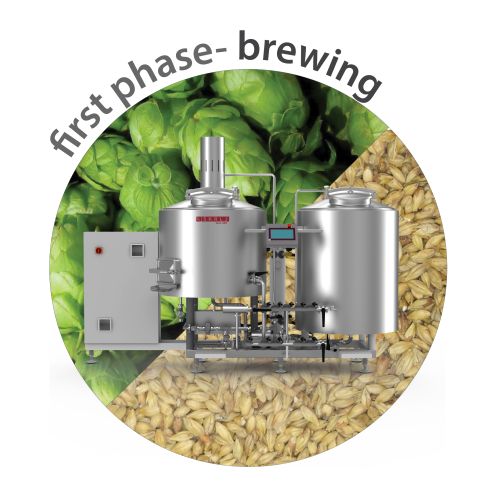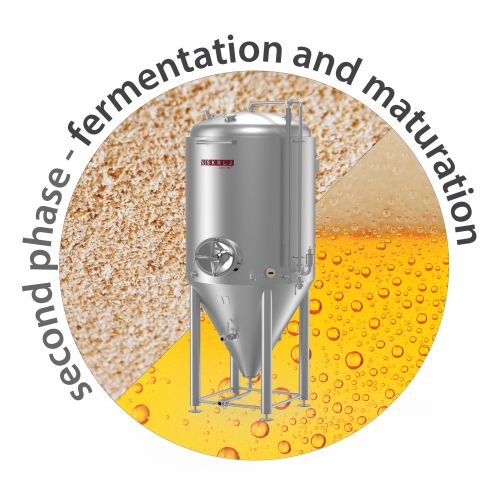The beer production process can be divided into two phases. The first phase, brewing, is performed inside a brewhouse, where a mixture of malt, water, and hops is used to obtain wort. The second phase, fermentation and maturation, is carried out in specially designed tanks (fermenters and maturation tanks). These tanks are used to transform wort into young beer, which then goes through the maturation process in order to obtain the final product - beer.
Some brewers swear by traditional methods, others prefer a modern approach to beer brewing. In both cases, the brewer's knowledge, experience, and creativity always play the pivotal role, while the right equipment facilitates the brewing process and helps bring their beer recipes to life.
Beer fermentation and maturation
Brewers around the world use various containers to carry out the fermentation and maturation process; in modern brewing, this phase is mostly performed in stainless steel tanks. In essence, tanks can be either atmospheric or pressurized; according to the design, they can be further divided based on their shape and position (vertical or horizontal, cylindrical, cylindroconical), equipment (with/without temperature control equipment), or other characteristics (insulated or uninsulated).
Primary (main) fermentation
After boiling, the wort is pumped from the kettle into the fermenter. During pumping, the wort passes through the plate heat exchanger, where it is cooled to a suitable temperature. Cooled wort is then aerated with sterile air in order to provide additional oxygen, which is needed so that the yeast can start the fermentation process.
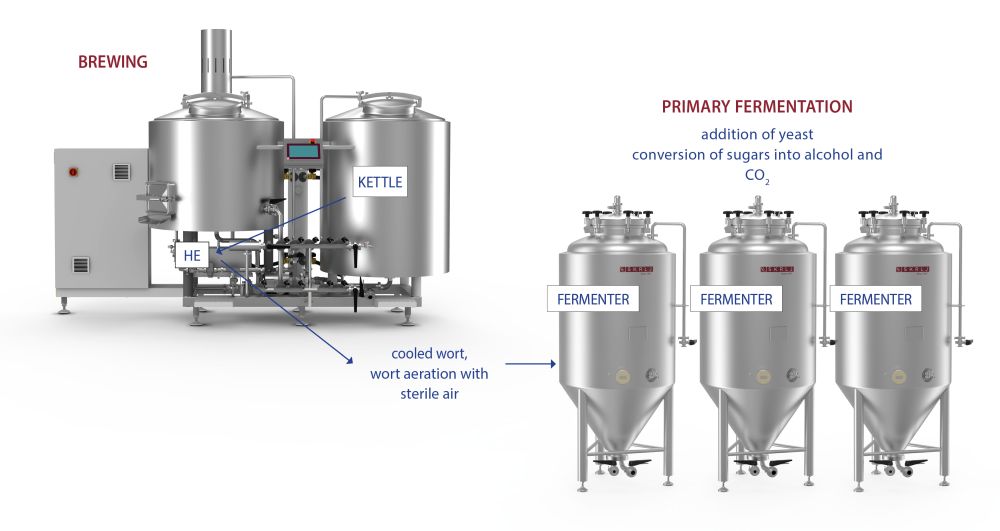
Primary fermentation starts once brewer's yeast is added to the cooled and aerated wort in the fermenter. The main function of the yeast during the primary fermentation phase is to convert sugars into alcohol. This also creates a by-product - carbon dioxide. The fermentation process produces heat, which means the fermenter must enable temperature regulation in order to maintain the desired alcoholic fermentation temperature.
When most of the sugars in the wort are converted into alcohol, the fermentation slows down and the yeast begins to settle at the bottom of the tank. The wort is then cooled to a temperature of 0 to 4 °C. The low temperature accelerates the settling of the yeast at the bottom of the tank.
During primary fermentation, wort is transformed into young or green beer.Young beer is still cloudy and microbiologically unstable. In order to fully develop the desired taste and aromas, the young beer needs to go through a maturation phase - secondary fermentation.
Secondary fermentation (beer maturation)
At this stage, the remaining sugars are converted into CO2. In order to keep the CO2 inside the tank and thus enable its absorption into the beer, you will need a tank that can withstand high pressures. Therefore, secondary fermentation is carried out in pressure tanks.
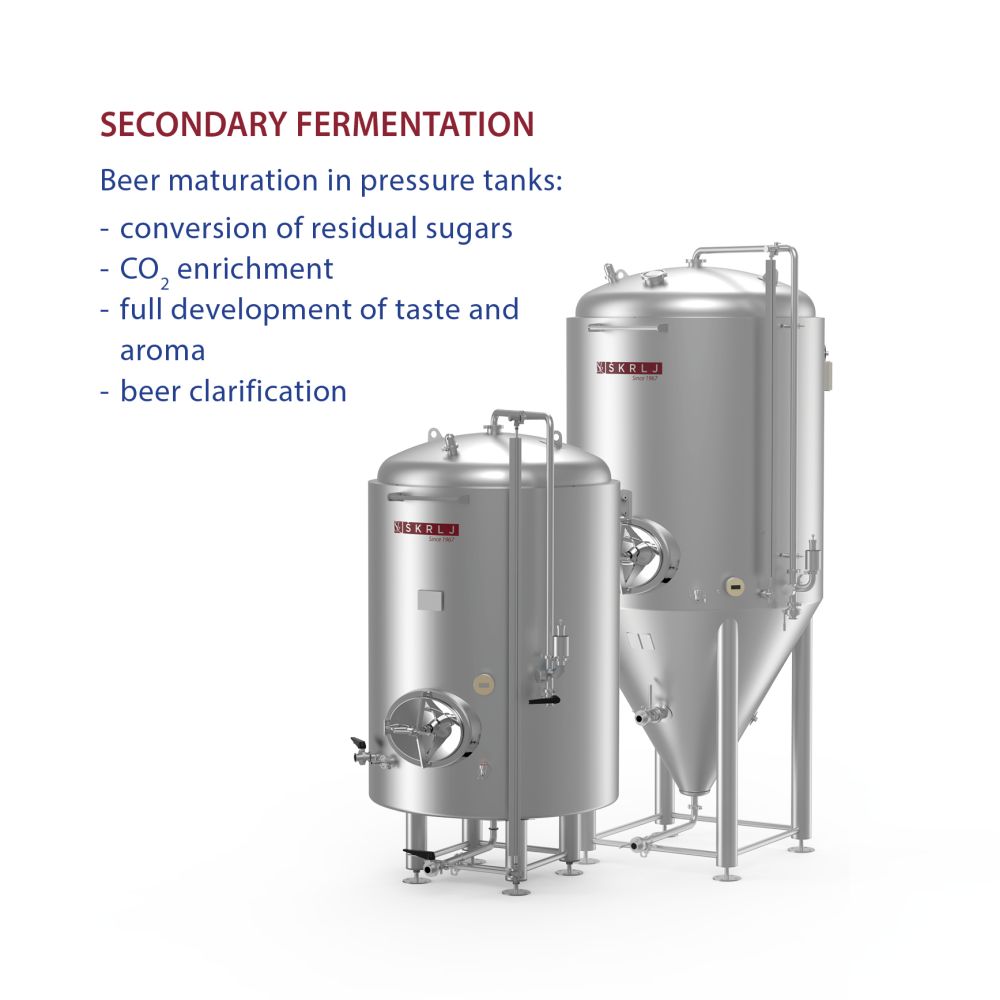
Pressure tanks must be manufactured in accordance with strict standards and guidelines for the manufacture of devices, operating under an increased pressure load. The dimensions, sheet metal thickness, and all installed components and accessories must meet the requirements of the pressure tank calculation. Such tanks must be equipped with a suitable safety mechanism, which is triggered if the pressure inside them exceeds the indicated limits.
If the fermentation process is performed in a cylindroconical tank, certified as a pressure vessel, the secondary fermentation can be carried out in the same vessel. Sediments (malt and hop residue) that have accumulated in the conical part of the tank during primary fermentation must be separated from the wort before secondary fermentation.
What happens during secondary fermentation?
- conversion of residual carbohydrates (sugars)
- CO2 enrichment
- beer clarification
- full development of taste and aroma
What should you consider when buying beer fermentation and maturation tanks?
Plan ahead – choose the equipment that is best suited to your needs and that will give optimal results. Before the purchase, consider the following factors:
- Brewhouse capacity and brewing plan. How much wort can you make with one batch? How many batches would you like to make daily/weekly? Fermentation and maturation vary based on beer style; with some beer types they can take several weeks to finish. You need to have a suitable number of fermenters and maturation tanks in order to optimize these processes as much as possible. A new batch can only be made when there are empty fermenters available. More...
- Space at disposal. How many tanks can be installed at the planned installation site? Make sure you also provide enough maneuvering space, which will be desperately needed to create an efficient work environment (process control, adding ingredients, tank cleaning and maintenance).
- Temperature of the area where the tanks will be installed. Uninsulated tanks are suitable for areas, equipped with a cooling device that can maintain a suitable temperature. For better fermentation and maturation process control, we recommend the use of insulated tanks (with cooling jacket). Product temperature fluctuations in the tank are minimal, and energy consumption is significantly lower, if you use thermally insulated tanks.
- Fermentation technology. Which fermentation method will be carried out: bottom fermentation (fermentation is slower, carried out at a temperature of approx. 5-13 °C) or top fermentation (process is faster, carried out at a temperature of approx. 15-20 °C)?
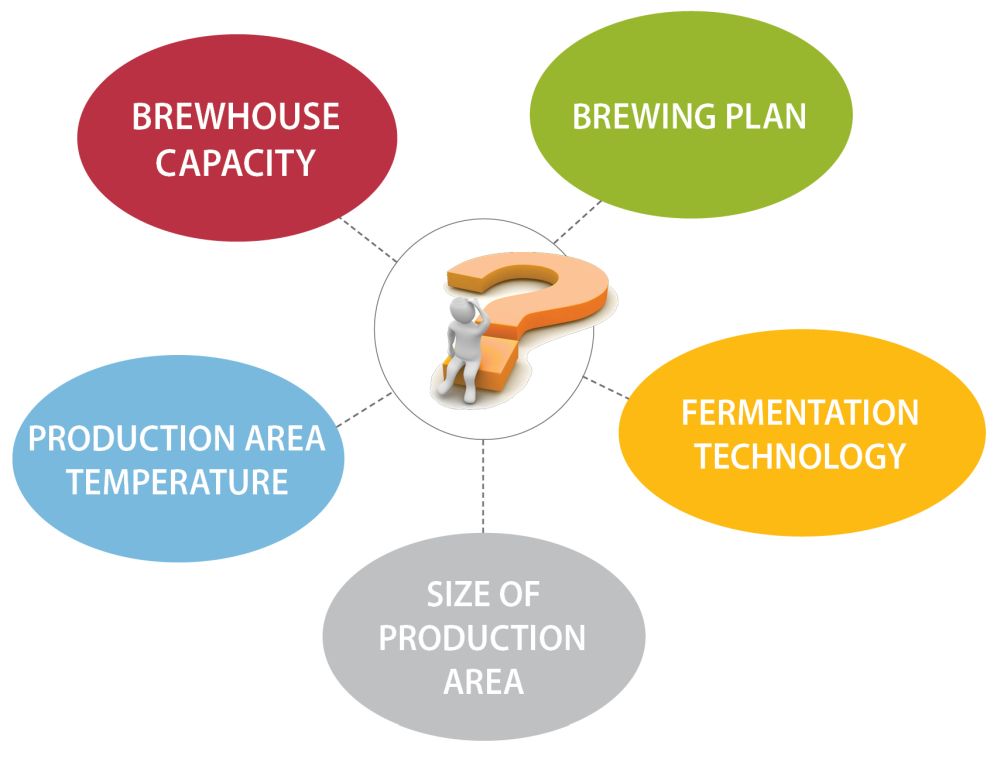
ZKI/ZMX/ZMI cylindroconical fermenters
Cylindroconical fermenters are the most widely used tanks in breweries. They are used to carry out alcoholic fermentation (primary fermentation) at temperature and pressure values, suitable for the type of beer you plan to make. If you also plan to use these tanks for secondary fermentation, make sure you get a pressurized fermenter.
- The main advantage of a cylindroconical fermenter is its universal use, as it can be used for both primary and secondary fermentation. Towards the end of the main fermentation process, the yeast begins to settle at the bottom of the vessel. Sediments that collect in the conical part of the tank are removed and thus separated from the wort. Secondary fermentation can then be performed in the same tank (at higher pressure and lower temperature values) or you can transfer the young beer into another tank via a racking connector.
- A closed fermenter protects the wort against infection due to surrounding microorganisms and does not require such high levels of environment sterility as are necessary when working with open fermenters.
- Effective temperature control. Both the cylindrical and conical parts of the fermenters are equipped with cooling jackets; the fermenters are insulated and protected by a waterproof insulation jacket. The temperature in the tank is controlled using a temperature regulator. All fermenters can be connected to the main control cabinet, which is then used to monitor and program the temperature trends in the tanks.
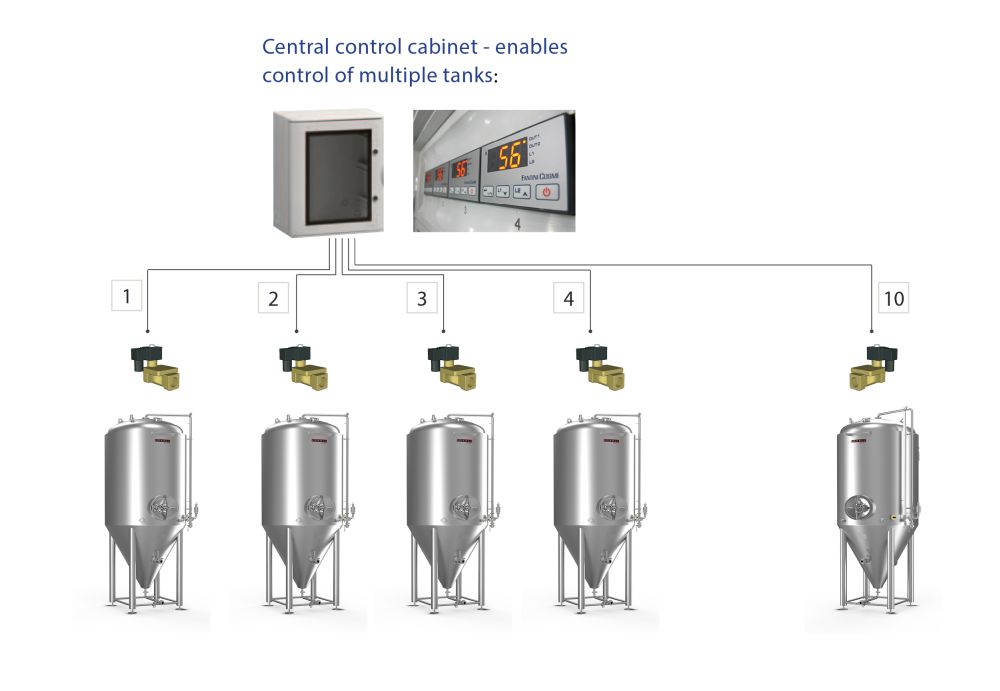
- Pressure control in cylindroconical tanks is necessary in order to ensure user safety. By regulating the pressure level, you can also have great influence over maturation intensity and the final properties of the beer. Tank pressure is controlled using various safety valves.
LTI/LMX/LMI beer maturation tanks
Maturation tanks are used for final beer maturation, aromatization, carbonation, and short-term beer storage before filling it into barrels, bottles, cans, or other packaging.
.jpg)
- Maturation tanks are used for the storage of young beer, which must still go through certain chemical processes. Because these processes take place at higher pressures, the tanks must be designed so that they can withstand the increased pressure.
- A pressure tank's mandatory equipment includes a safety valve and an additional vacuum/pressure relief valve, which is used to set up and regulate the pressure inside the tank. A reliable pressure control system in a cylindroconical tank is necessary to ensure user safety. By regulating the pressure level, you can also have great influence over maturation intensity and the final properties of the beer (regulation of carbon dioxide content in beer; higher pressure means higher CO2 content).
- Secondary fermentation of the remaining fermentable extract in the young beer takes place over a long period of time and at low temperatures. Therefore, the tank needs an efficient temperature regulation system to achieve and maintain the desired temperature of the product.
Horizontal storage tanks
These horizontal tanks are designed for beer storage. They are equipped with removable PVC bags that protect the beer against air exposure (without the use of inert gases) and maintain the quality of the stored beer.
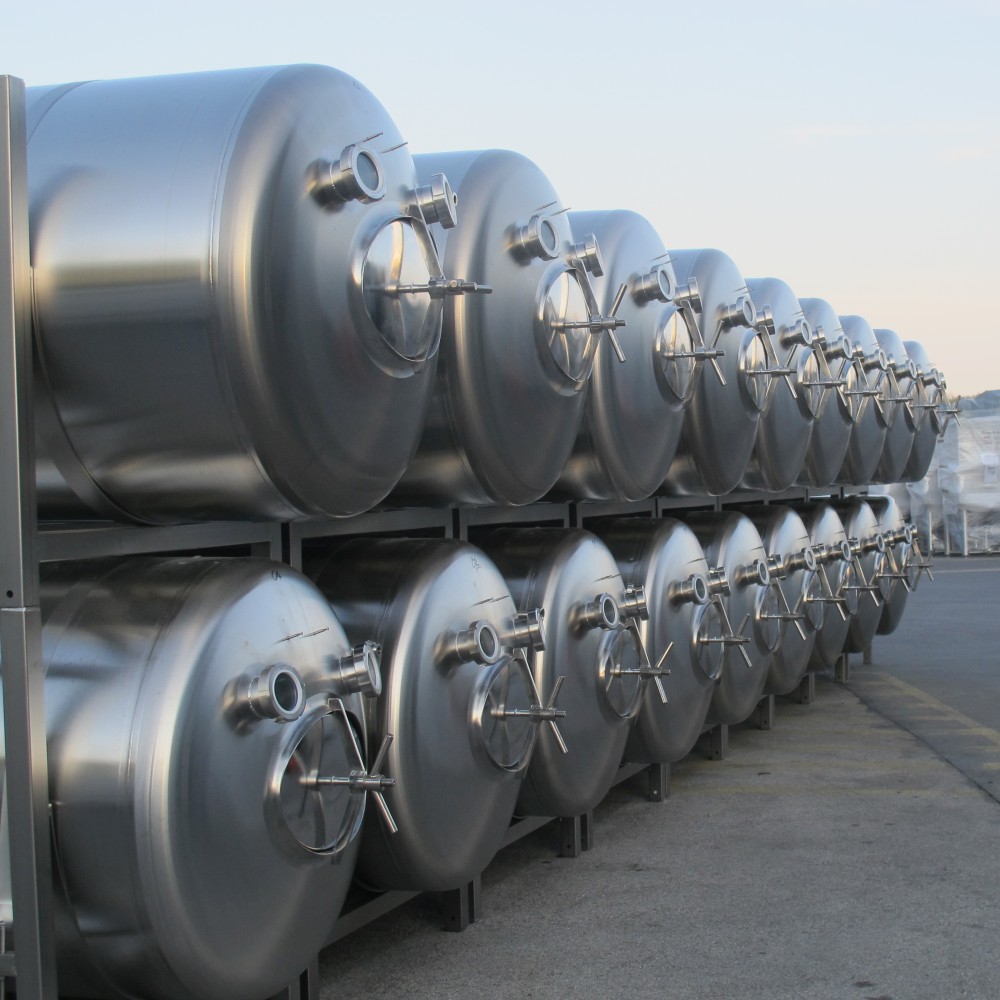
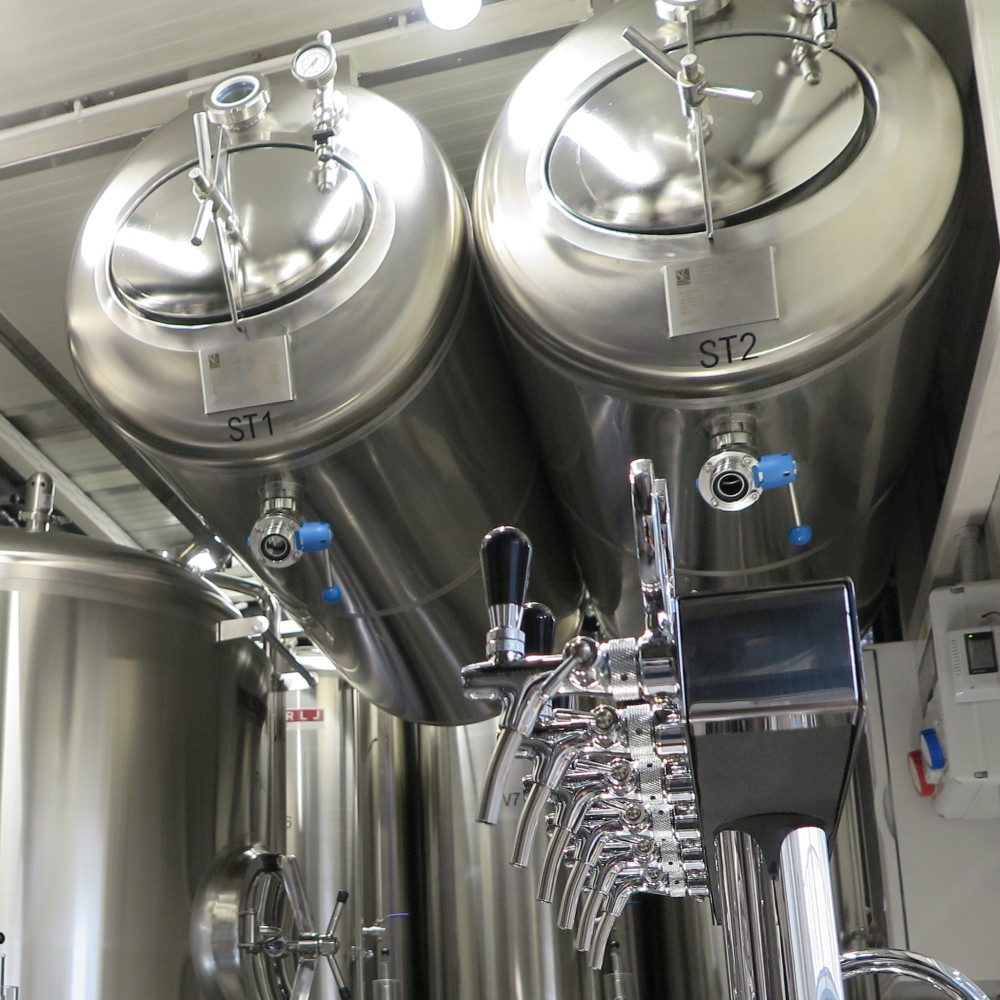
Take a look at our wide range of fermenters and beer maturation tanks. Use filters to sort the products by shape, size, and other tank properties.

